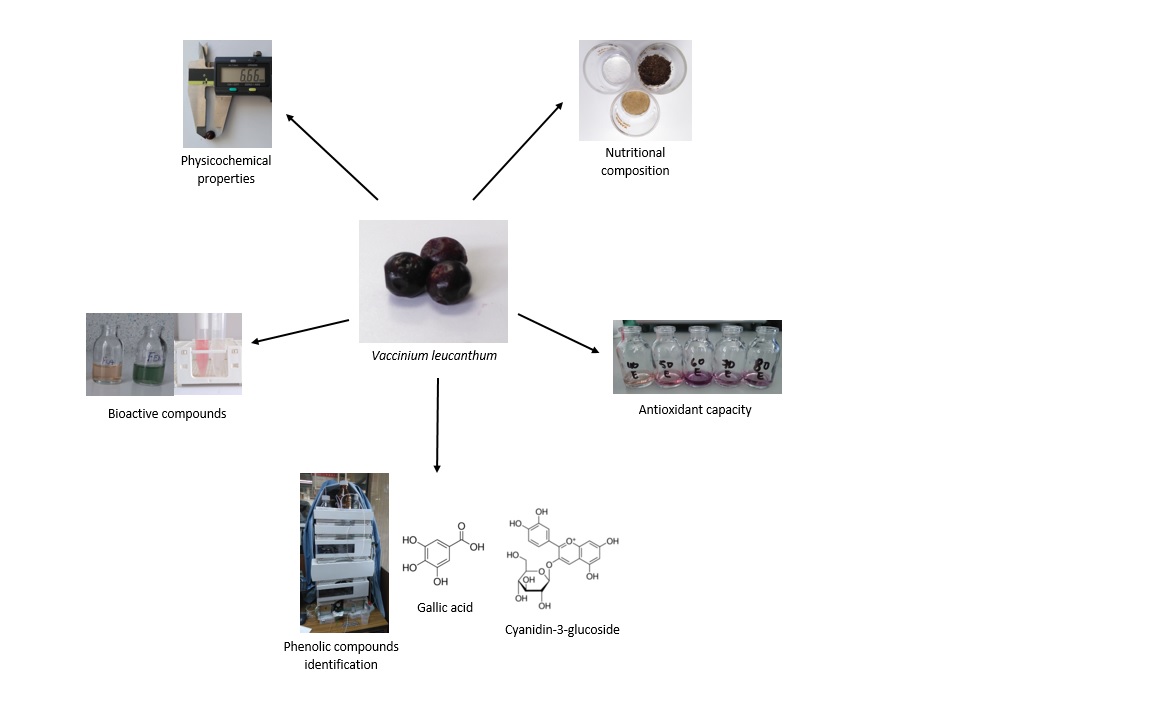 |
|
Vaccinium leucanthum Schltdl. is a tree growing wild in the State of Hidalgo, Mexico, and its fruit is a small edible berry known as “cahuiche”. Its physicochemical parameters, nutritional composition, antioxidant compounds (ascorbic acid, phenolic compounds, flavonoids, and anthocyanins), and antioxidant capacity (ABTS●+, DPPH● and FRAP) were quantified in this work. HPLC-DAD was used to identify phenolic compounds and anthocyanins. The total dietary fiber was 8.36 g/100g fresh weight (f.w.). Total phenolics content was 1,090mg of gallic acid equivalents/100 g f.w. and total anthocyanins content was 267 mg equivalents of cyanidin-3-glucoside/100g f.w. Radical scavenging capacity by ABTS●+ and DPPH● were 1,035 and 1,293 μmol of Trolox equivalents/100 g f.w., respectively. While the assay of FRAP showed 1,558 μmol of Fe2+ equivalents/100 g f.w. Gallic acid was the major phenolic acid and cyanidin-3-glucoside was the most abundant anthocyanin. Cahuiche could be considered as a fruit with functional properties due to its high content in dietary fiber, phenolic compounds, and antioxidant capacity.
Keywords: antioxidant capacity, bioactive compounds, chromatography analysis.
|
|
 |

